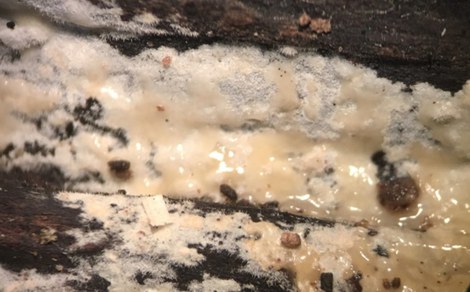Mycoparasitism and the evolution of Basidiomycota
dr. Nathan Schoutteten
Promotor Mieke Verbeken

Basidiomycetous mycoparasites are usually very small fungi, and several of them don’t even form own basidiocarps, but rather grow inside or between the tissues of their host species. Several different types of functional interaction structures have been discovered, of which haustoria and colacosomes are the two main types. Haustoria forming fungi belong to various different genera and classes, whereas colacosomes are found in very few species only, belonging to the classes Cryptomycocolacomycetes and Microbotryomycetes (Pucciniomycotina). The latter class also comprises the enigmatic anther smuts, a lineage of highly specialized plant parasites, which probably evolved from a mycoparasitic ancestor. Most basidiomycetous mycoparasites have been described and delineated using a morphological species concept, although the little available morphological characters often confronted mycologists with serious uncertainties when assigning species to genera and higher taxa.
We aim to shed light on the diversity and evolution of mycoparasitism in Basidiomycota at two different levels, i.e. the organismic and the genomic level. Fieldwork is an important part of this project, since fresh specimens are being isolated in pure culture for subsequent molecular studies. Phylogenetic and phylogenomic reconstructions of mycoparasitic taxa allow to unravel the evolution of this trophic strategy, and to establish an integrative species concept in this group which incorporates phylogenetic evidence, detailed micromorphological analyses and ecological data. Genome sequences of selected mycoparasites will allow 1) a better phylogenomic reconstruction of Basidiomycota (especially focussing on the oldest lineages) and 2) a comparison of mycoparasites and closely related phytoparasites at the genomic level.